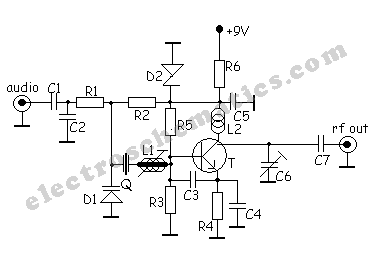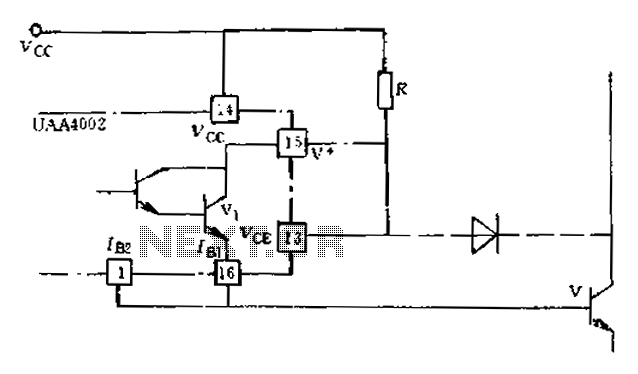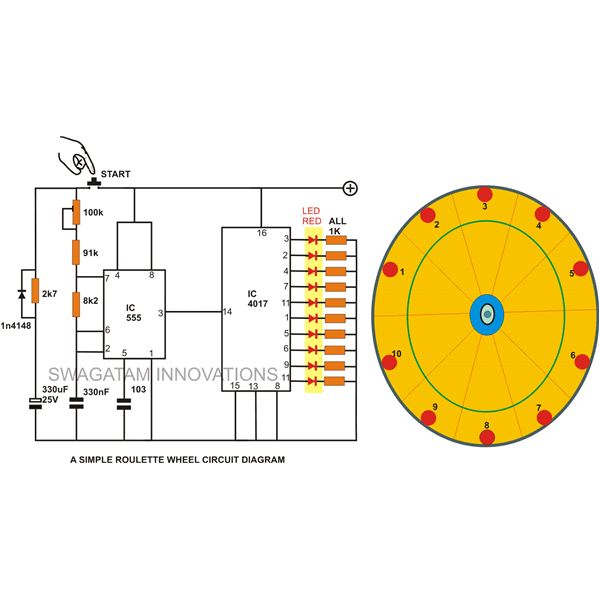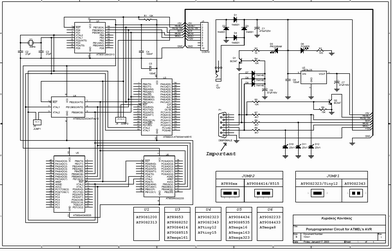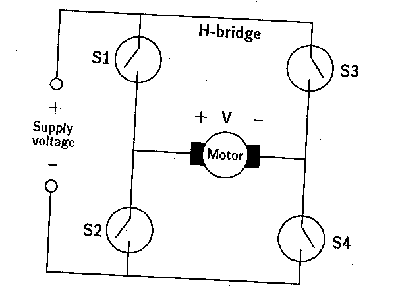
Tv Sound System Circuit
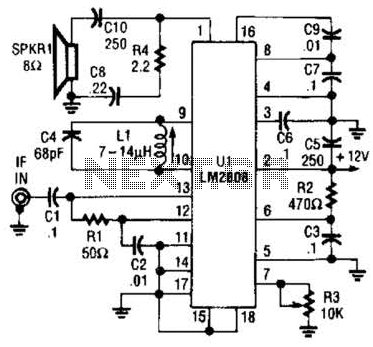
An LM2808 performs IF amplification of the 4.5-MHz sound subcarrier, limiting, detection, and audio amplification. If the center frequency must be changed, then change L1/C4. Audio output is 0.5 W. R3 is the volume control.
The LM2808 is an integrated circuit specifically designed for intermediate frequency (IF) amplification, particularly suited for applications in sound subcarriers operating at a frequency of 4.5 MHz. This device effectively handles multiple functions within an audio processing chain, including limiting, detection, and amplification of audio signals.
To achieve the desired center frequency, adjustments can be made to the components L1 and C4. These components form a resonant circuit that determines the frequency response of the amplifier. Altering the inductance of L1 or the capacitance of C4 will directly influence the center frequency, allowing for flexibility in tuning the circuit to specific signal requirements.
The audio output capability of the LM2808 is rated at 0.5 W, which indicates that it is capable of driving small speakers or headphones directly without the need for additional amplification stages. This output power is suitable for personal audio applications, where compactness and efficiency are essential.
R3 serves as the volume control within the circuit. By varying the resistance of R3, the user can adjust the amplitude of the audio output, providing a simple means to control sound levels. This feature enhances user experience by allowing for easy manipulation of audio intensity.
Overall, the LM2808 integrated circuit streamlines the process of audio signal processing by combining multiple functions into a single package, making it an efficient choice for applications requiring IF amplification and audio output. An LM2808 performs IF amplification of the 4.5-MHz sound subcarrier, limiting, detection, and audio amplification. If the center frequency must be changcd, then change L1/C4. Audio output is 0.5 W. R3 is the volume control. 🔗 External reference
The LM2808 is an integrated circuit specifically designed for intermediate frequency (IF) amplification, particularly suited for applications in sound subcarriers operating at a frequency of 4.5 MHz. This device effectively handles multiple functions within an audio processing chain, including limiting, detection, and amplification of audio signals.
To achieve the desired center frequency, adjustments can be made to the components L1 and C4. These components form a resonant circuit that determines the frequency response of the amplifier. Altering the inductance of L1 or the capacitance of C4 will directly influence the center frequency, allowing for flexibility in tuning the circuit to specific signal requirements.
The audio output capability of the LM2808 is rated at 0.5 W, which indicates that it is capable of driving small speakers or headphones directly without the need for additional amplification stages. This output power is suitable for personal audio applications, where compactness and efficiency are essential.
R3 serves as the volume control within the circuit. By varying the resistance of R3, the user can adjust the amplitude of the audio output, providing a simple means to control sound levels. This feature enhances user experience by allowing for easy manipulation of audio intensity.
Overall, the LM2808 integrated circuit streamlines the process of audio signal processing by combining multiple functions into a single package, making it an efficient choice for applications requiring IF amplification and audio output. An LM2808 performs IF amplification of the 4.5-MHz sound subcarrier, limiting, detection, and audio amplification. If the center frequency must be changcd, then change L1/C4. Audio output is 0.5 W. R3 is the volume control. 🔗 External reference

